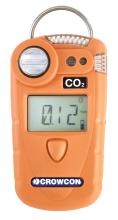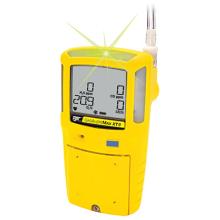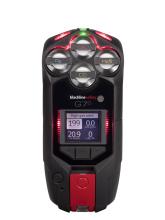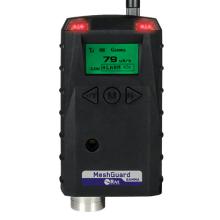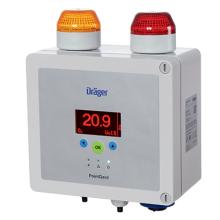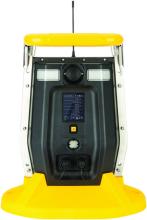Hydrogen sulphide / H₂S

Gas Identification
Chemical properties
Physical properties
Flammability limit
Threshold limit value
Hydrogen sulphide : Description and use
Hydrogen sulphide is very dangerous in enclosed spaces, particularly if there is no ventilation. As this gas is heavier than air, extra care must be taken if plateaus, cavities or holes are present or if there are differences in level as there will be higher concentrations present here.
Hydrogen sulphide is a colourless and flammable gas with a foul odour of rotten eggs. It is highly toxic, slightly soluble in water which creates a weak acid: hydrosulphuric acid. It reacts with basic aqueous solutions and metals such as silver or steel, even stainless steel.
- In the chemical industry for manufacturing sulphuric acid, organic sulphides (particularly sulphur and sodium hydrosulphide), sulphurated organic compounds such as thiols and additives to lubricants.
- In the nuclear industry for producing heavy water.
- In metallurgy to remove impurities in the form of sulphides that are found in some ores.
Hydrogen sulphide : Warnings and caution
H220 - Extremely flammable gas.
H280 - Contains gas under pressure; may explode if heated.
H330 - Fatal if inhaled.
H400 - Very toxic to aquatic life.
P210 - Keep away from heat, sparks, open flames, hot surfaces. No smoking.
P260 - Do not breathe dust/fumes/gas/mist/vapours/spray.
P273 - Avoid release to the environment.
P304 - IF INHALED: P315 - Get immediate medical advice/attention.
P340 - Remove victim to fresh air and keep at rest in a position comfortable for breathing.
P377 - Leaking gas fire: Do not extinguish, unless leak can be stopped safely.
P381 - Eliminate all ignition sources if safe to do so.
P403 - Store in a well-ventilated place.
P405 - Store locked up.
Hydrogen sulphide : Related products
Portable Gas Detectors
Fixed Gas Detectors
